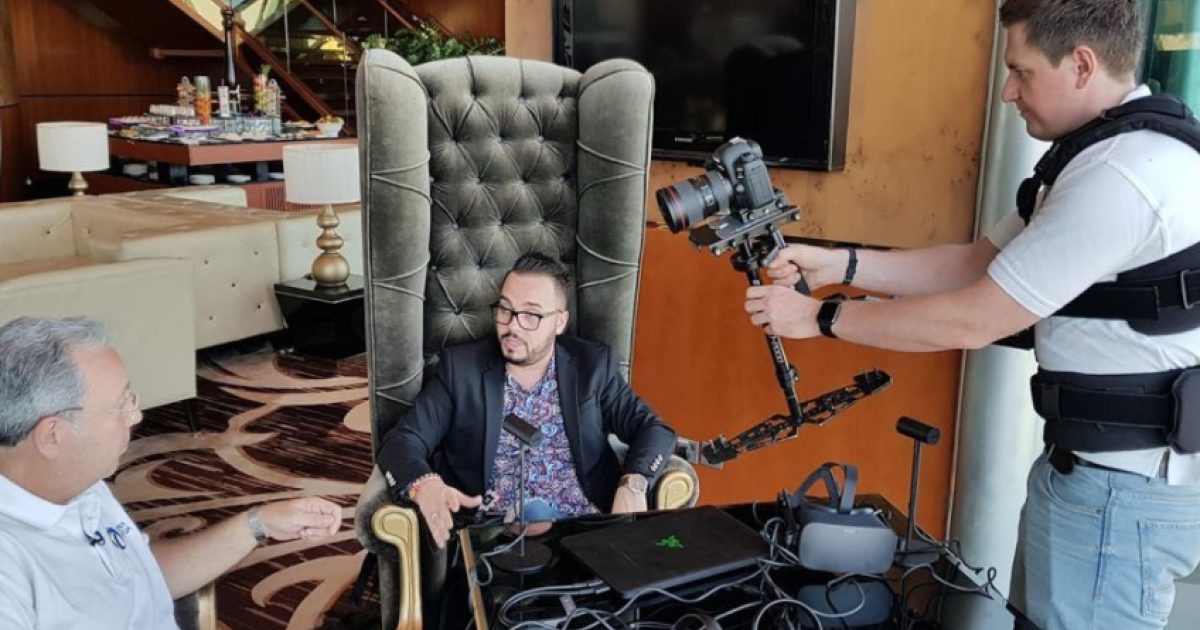Whether we are talking about film financing to limited-release collectibles, NFTs, or non-fungible tokens, are certainly the future of Hollywood collectibles, even if many people still don’t understand them. If one thing is for certain, Hollywood is already investing millions of real-world dollars into NFTs, and independent filmmaking may be one of the earliest applications.
Last month, Saturday Night Live (SNL) did a short called “What the Hell’s an NFT?“, which also served beyond that of a traditional SNL parody. Public interest in NFTs has grown immensely in recent months, following what public figures like Justin Blau (3LAU), Lindsay Lohan, and recently, Ellen DeGeneres‘ dive into the digital collectibles space.
Like any new technology, it takes the public some time to really grasp the concept, and then actually understanding how to invest in such new innovations.
What Are NFTs?
NFTs are nothing other than a unique digital certificate of authenticity for physical or digital objects, stored in computer code on the Blockchain. When we think about an item’s fungibility, we think about commonality, in both appearance and value, such as the U.S. dollar bill.
However, NFTs provide both the creator and consumer with a unique opportunity to create and receive value for an associated object, again, physical or digital, which can be bought, sold, and traded in perpetuity. But no NFT is the same, adding to the “uniqueness.”
The holder of the NFT essentially has “bragging rights,” which Blau described as creating “such an emotional value surrounding ownership of a particular asset, that it’s hard not to get excited,” in an interview with The New York Times.
Independent Film Financing
So, how would an NFT work from a financing perspective? Let’s take the highly anticipated release of the newest installment to the Bond franchise, 007: No Time to Die, for example.
Hypothetically, let’s say the film’s director wanted to create two types of NFTs: At $1,000 per token, there could be, hypothetically, 1,000 tokens that represent ownership shares that give profit participation as well as $100 tokens to access the movie’s online premiere.
Recently, the film finance firm The Forest Road Company, known for The Kindergarten Teacher, closed a $20 million fund to make pre-production investments in exchange for the right to sell associated collectibles using NFTs. Producers will in turn participate in the NFT royalty stream after Forest Road recoups its investment.
But why? These objects of value are created to give filmmakers more capital on the front end, and more profit for investors on the back end.
Interacting With Your Collectibles
The British software development company, Ocean Software, which became one of the biggest European video game developers and publishers of the 1980s and 1990s, was also credited for helping bring games to the mainstream by licensing high-profile intellectual property rights to make games from.
Gary Bracey, CEO and co-founder of Terra Virtua, hails from Ocean, and now helps to create content which he describes as “original, genuine, and suitably licensed” in the form of digital collectibles. Terra Virtua is an entertainment-focused collectibles platform, which harnesses the power of blockchain technology to house, store, and forever immortalize rare, unique items such as an artist’s painting, a musician’s album/track, and other items of unique value.
Penetrating Hollywood from the top, Terra Virtua is partnered with Paramount Pictures and Legendary Entertainment, which has provided Terra Virtua with the rights to license digital collectibles based on some of these studio’s biggest films like Pacific Rim: The Uprising and Top Gun. By owning one of these many collectibles, such as a Jaeger or pilot helmet, holders of these items can interact with their collectible through augmented reality (AR) and virtual reality (VR).
In an interview with Benzinga, Bracey described the way the world has changed over the past 13 months, pointing to the disruption the entertainment industry has experienced. “Making revenue from big premiers, promotional physical merchandise and cinema tickets, have essentially all but disappeared, as we’ve been battling the coronavirus pandemic,” he explained.
“What this means is that the potential revenue that can be made from each movie is drastically reduced and film studios will need to find alternative ways to just break even, let alone make a profit. With NFTs, we can offer the studios ways to license the IP that will make them money not only on the primary sale, but on secondary sales too.”
With licensing, comes traditional intellectual property law, which according to attorney Andrew Rossow, still applies in the world of NFTs and digital assets.
“Regardless of the ‘newness’ to the concept of digital collectibles, NFT owners are not exempt from current intellectual property laws, simply because it’s a new form of creation,” Rossow shared in a recent article. “Indeed, traditional law still applies to decentralized blockchain technology, so creators need to think twice before feeling confident about using third party brand names, logos, famous characters, pictures, videos, music, or other third-party IP without first obtaining the IP owner’s permission.”
The most important part about what Terra Virtua offers, Bracey explains, is the relationship the company builds with studios. “They are entrusting us with their IP from which to create NFTs that are of the same quality as what you see on the big screen and so we work with the studio every step of the way and nothing even goes out that hasn’t been reviewed and approved by the studio.”
Weighing in on the recent SNL short “What the Hell are NFTs?”, Bracey thought the SNL short was educational.
“[It] was awesome, as it uses pop-culture to explain what an NFT is and goes some way to educating people on what an NFT is,” he described. “The biggest issue we face is that the noise around NFTs that the mainstream is hearing is that NFT art sells for $69 million, snippets of basketball games featuring LeBron’s dunk for the LA Lakers sells for $200,000 and this is just not fully representative of the NFT world. For example, you can pick up an animated Jaeger from Pacific Rim: The Uprising for under $100, and then interact with it in augmented reality. Another point is that NFTs do not have to be intrinsically linked with cryptocurrencies. On the Terra Virtua marketplace, you can purchase NFTs in ETH or by using your standard bank card. So, the SNL short does a great job in terms of starting the conversation but there’s still a long way to go on fully educating people.”
The Name’s ‘Bond’…James Bond
We asked Bracey that if the company were to assess the upcoming 007: No Time to Die film, the latest addition to the Bond franchise to its platform, what the next step would be in the process of turning in-film items into collectibles.
“That entirely depends on whether we have the entire 007 IP or just the IP for 007: No Time To Die. Assuming it’s the entire collection, the first thing that jumps to mind would have to be all of the epic cars Bond has driven through the years. Our Terradome houses the ‘Jupiter II’ from Lost in Space and ‘Kong’ from Godzilla vs. Kong, so having a Bentley Mk IV from Russia with Love or the Aston Martin DBS v12 from Casino Royale, lined up next to the other NFTs would be pretty epic.”
(C) 2021 Benzinga.com. Benzinga does not provide investment advice. All rights reserved.





